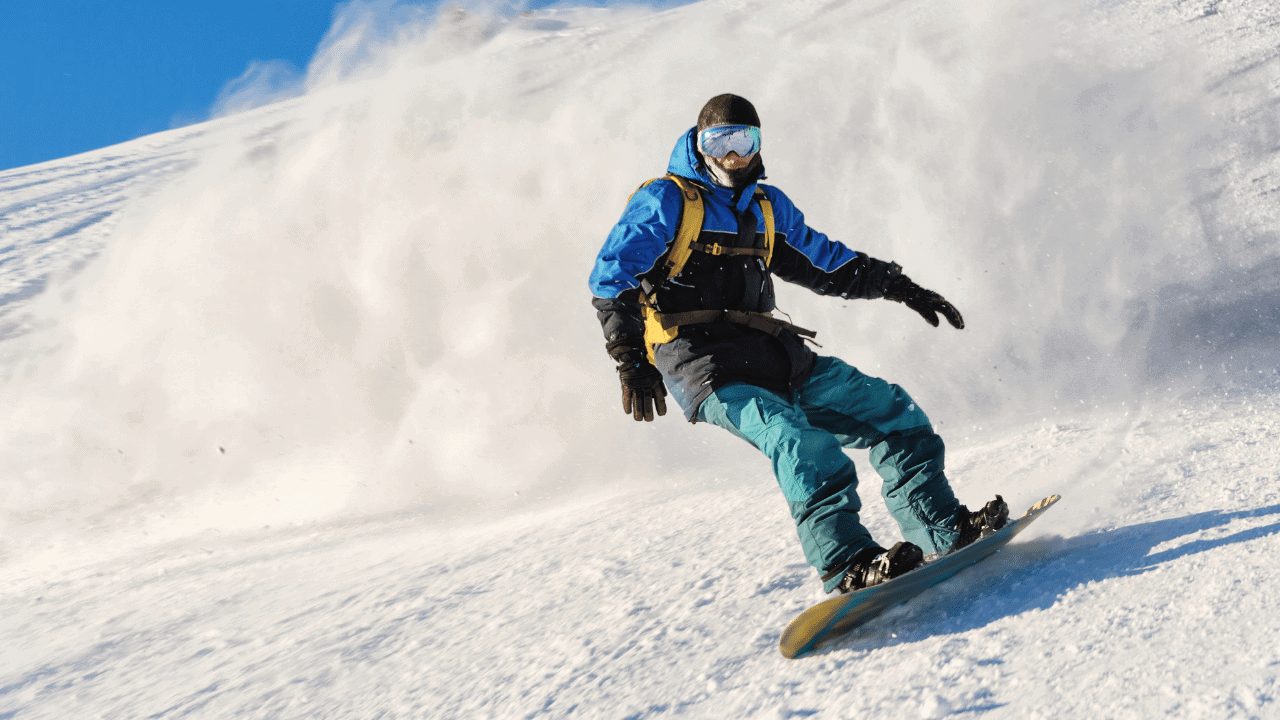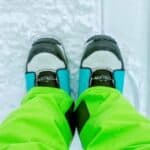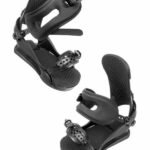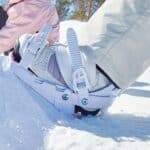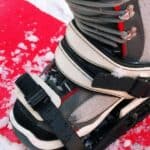Snowboarding is an exciting activity and, fortunately, relatively easy to learn.
Below, I’m going to walk you through the basics of snowboarding.
I’ll tell you everything you ought to know about getting ready to snowboard, the gear, standing up from a seated position when strapped to the snowboard, and how to make moves out on the snow.
Table of Contents
How to snowboard
Here’s what you need to know and do to get started snowboarding:
- Get the proper gear. Learn to strap into and out of the snowboard properly.
- Learn to stand up when you’re strapped to the snowboard from a sitting position.
- Learn to skate.
- Learn to glide.
And, voila! You’re snowboarding!
First things first
You’ve probably already guessed this, but you don’t just grab a snowboard, slip into “something warm”, then hit the snow.
That would get you nowhere, fast. Actually, you start with what you’re going to wear.
These boots were made for snowboarding…
… and that’s what they’re going to do. (Thanks, Nancy. 😊)
Step one is to find snowboarding boots that fit you snugly.
We’ve got an article that will show you how to choose the perfect pair of snowboard boots that fit you perfectly.
Whether you end up wearing two pairs of socks or just one, I suggest you begin with two.
If you buy boots that are tight when you wear only one pair of socks, it will be difficult to ‘upgrade’ to wearing two pairs of socks should the need ever arise.
The reverse, though, is a piece of cake.
Tip: You ought to never need more than one pair of socks with modern snowboard boots. My advice above about wearing two pairs isn’t for keeping your feet warm but to help you ‘ride-in’ your boots quicker.
Carry your snowboard as if you know what you’re doing
It might sound ridiculous to you, but when you’re not riding your snowboard, you have to carry it around the ‘right way’.
Essentially, don’t carry it sideways or high on your shoulder because sooner or later, you’re going to smack someone with it.
Instead, carry the snowboard underarm, or drag it by one of its bindings if you are on snow.
What’s your ‘stance’?
Your ‘stance’ is the posture you hold on the snowboard as you slide downhill.
There are two recognized stances, ‘goofy’ and ‘regular’.
In the ‘goofy’ stance, your right foot’s forward on the snowboard. It’s the opposite with the regular stance, where the left foot is placed forward.
‘Regular’ doesn’t mean ‘correct’. There is no correct or “better” stance on a snowboard. There is only what feels right to you.
What’s this thing called?
There are terms that everyone uses in the snowboarding world.
Knowing what they are will help you immeasurably out on the snow or back in the ski lodge, just shooting the breeze and speaking to experienced snowboarders.
‘Tail’ is the back of a snowboard, and ‘nose’ is its front.
The side closest to your heel when you’re strapped onto the snowboard is called the ‘heelside’ edge, and the side closest to your toes is called the ‘toeside’ edge (duh).
‘Bindings’ are pieces of plastic and/or metal which attach your boots to the snowboard.
Bindings’ straps have a ratchet-type locking system, so there’s a ladder that fits into the ratchet, and snowboarders tighten up by cranking the ladder ever tighter on the ratchet. (You’ll understand what I mean when you look at some bindings. Don’t worry, it’s not rocket science.)
Strap in for the time of your life
Find somewhere flat when you first strap onto your snowboard.
It’s unnecessarily adventurous to slide down a hill with one foot barely strapped and the other trailing behind in a most ungainly manner.
To strap in, put one boot in the binding and push the ladder into the ratchet. When it is in the ratchet, turn the ratchet until it is tight.
To undo the fastening, just release it by pulling out the buckle.
Up, up and away
Cool. So you’ve got the gear, you know how to strap onto–and out of–the snowboard.
Heck, you even know how to carry your snowboard. Awesome! Well, now it’s time to learn how to snowboard.
Getting up
Beginners tend to spend an awful lot of time on the ground (wink, wink).
I doubt if it will be different for you, so it’s probably a good idea for you to know how to get to your feet from a seated position when both feet are strapped into the snowboard.
When seated, lift yourself a little with both arms and push your behind forwards until it is nearly over the snowboard.
At some point, you’ll realize that you can use your leg muscles to stand up. (It feels and looks like getting to your feet from a squat.)
Tip: start your standing-up practice on level ground. It’s not a tremendous amount of fun to go hurtling down a hill before you’re ready.
Skating
Getting from point A to point B when you’re strapped in and on the snow is done by removing your back foot from its binding and pushing forward with it against your heelside edge.
You’ll probably see others doing it, so just copy them. This method of locomotion is called ‘skating’.
Gliding
Gliding is using the power of gravity to go downhill.
To glide successfully, you need to know more than just how to stay on your feet. You also have to know how to slow down or even stop.
First, do not point your snowboard downhill. Instead, learn to slide down at shallow angles sideways.
Control your speed by cutting the angle you attack the downhill while simultaneously digging in your heels and lifting your toes.
Stop by slowing down until you come to a complete halt.
To maintain balance while you gain speed, keep your knees bent and your back straight.
Frequently Asked Questions About How to Snowboard
What is garland?
A garland is doing a half-turn without changing the snowboard’s lead edge (either heelside or toeside). Garlands leave trails in the snow which look like er… garlands.
I’ve heard that there are rules everyone has to follow in most ski resorts. What are they?
The ten FIS International Ski Federation rules need to be followed when skiing or snowboarding.
Afterword
Snowboarding is a lot of fun if you keep a few things in mind. It’s cold out in the snow.
Dress up appropriately to keep the cold at bay. Also, hurtling down a hill can be dangerous.
Don’t overlook safety gear, including helmets. Build up your expertise.
Trying to do too much, in the beginning, is a recipe for disaster.
Besides, what’s the rush? You should enjoy the journey since there is no destination.
